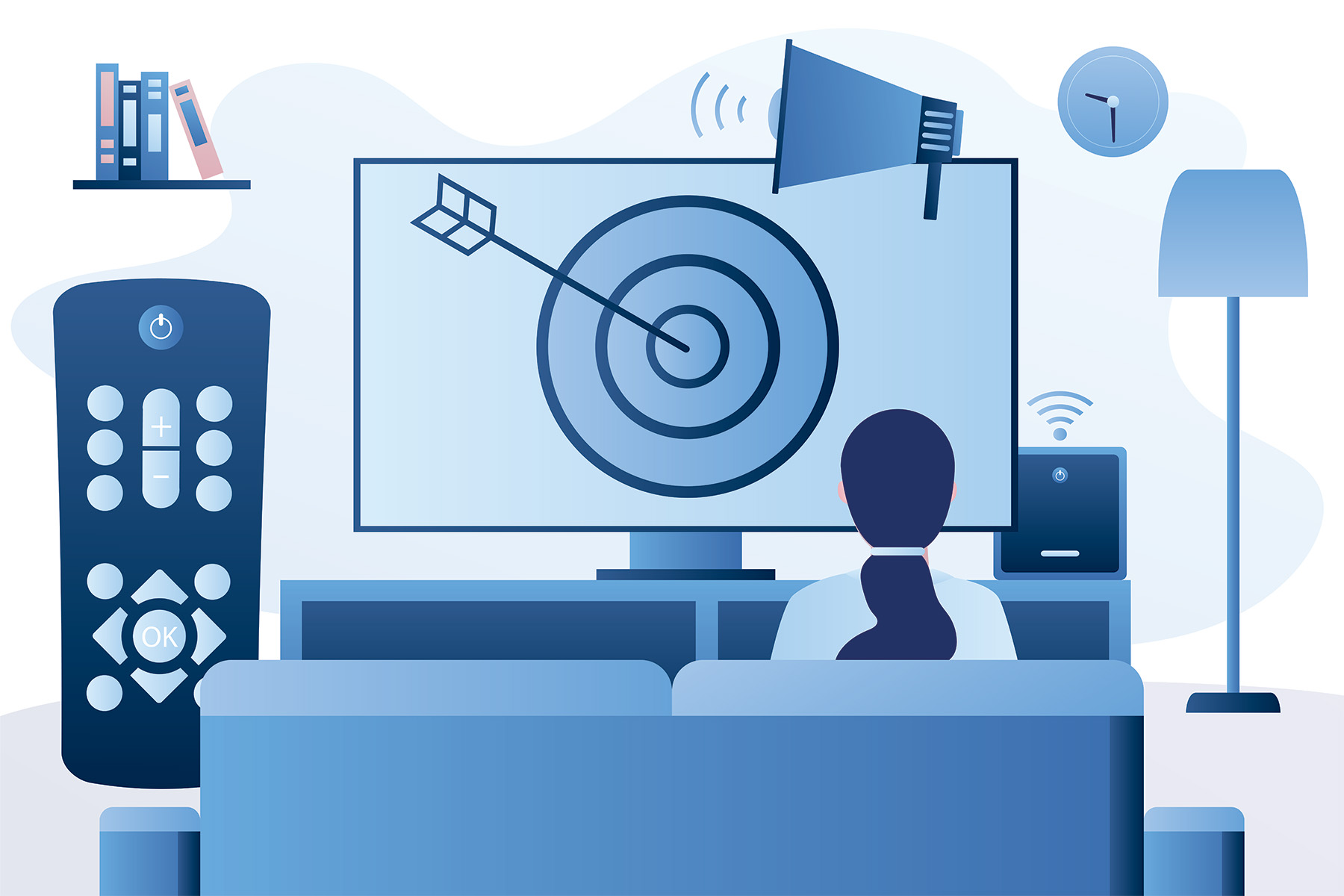Over-the-Counter (OTC) and Prescription (Rx) brands have invested over $3 billion in linear TV advertising during the first half of 2022, with no signs of letting up.
Amidst a fragmented Convergent TV landscape that offers consumers a multitude of ways to watch their preferred programming, linear TV is still a valuable environment for pharma advertisers. Pharma ads generate strong consumer engagement and drive TV viewers to seek additional information online via a search engine such as Google.
In fact, Rx and OTC linear TV ads have generated a combined 56 million incremental online branded searches from January to June, and the year’s top creatives have several themes in common.
OTC Creative Insights: Nervive, Relaxium Spots Lead in Searches Generated
P&G’s Nervive had the highest performing OTC creative in the first half of 2022 after the brand’s launch just last year. The spot aired more than 6,500 times, generating 2.2 million incremental online branded searches for the product and performing 276% above the average OTC creative—meaning viewers were almost three times more likely to search for Nervive after seeing the brand’s creative versus the average OTC ad.
Interestingly, Nervive use the same 15-second creative across its estimated $13.4 million national linear TV investment, which is over $3 million more than Xyzal, the next highest spender on this list.
Shorter Spots Perform Above Expectations
In a category where longer ad durations typically generate more incremental branded search, EDO found that three of the top 10 performing creatives in the first half of 2022 were 15-second spots. Nervive, Xyzal, and ZzzQuil all invested over 94% of their national linear advertising dollars in 15-second spots.
Xyzal—which launched in 1995 but entered the OTC market in 2017—found success with a creative that debuted in February. The spot has generated nearly twice as much incremental branded search than the average OTC creative in 2022. According to a recent report, 50 million Americans are suffering from an allergy season that’s longer, more severe, and affecting more people than ever before. With more consumers in-market for allergy relief, Xyzal was able to capitalize on building brand awareness and engagement using a 15-second spot that was proven successful earlier in the year.
Authentic Celebrity Appearances
Another theme from the top 10 can be found in three separate spots from Relaxium. The campaign, which prominently features former governor of Arkansas Mike Huckabee as a long-time Relaxium user. Combined, the spots generated nearly three million incremental branded searches in the moments after the ads aired on national linear TV.
A driving factor in the ads’ success is the authenticity of the celebrity appearance. Two of the three ads show Huckabee with country legend and fellow Relaxium user Larry Gatlin. Celebrity appearances boost ad performance—especially if they are a trusted, known face to the audience.
This rang true for several brands throughout the top 10 list. In addition to Relaxium’s Huckabee and Gatlin appearances, Relief Factor hired actor Joe Piscopo and radio host Larry Elder for 60-second spots that generated a combined 1.1 million online branded searches for the product in 2022.
Rx Creative Insights: Vuity Generates Three Times More Search
Vuity had the runaway top Rx creative for the first half of 2022, generating a total of 3.4 million incremental branded searches. Promising better eyesight with just an eyedropper each week, Vuity has created an entirely new sub-category within the Rx space.
During the launch phase of a new Rx product, building brand awareness is paramount to driving eventual prescription lift. Typically, we see Rx brands targeting pharmaceutical sales reps and physicians for the first six months and then shifting to a direct-to-consumer strategy.
National linear TV plays a crucial role in generating consumer engagement and interest at scale within the direct-to-consumer strategy. Successful TV ads are driving consumers to find more information through search where the brand’s digital efforts will continue to move consumers through the customer journey.
Diabetes Advertising Remains Prevalent
Estimated spend for the diabetes category has skyrocketed 129% from 2019 to 2021 ($368 million to $821 million), while searches generated as a result of diabetes TV advertising increased 150% in the same time frame (5.4 million to 14 million searches). In the first half of 2022 alone, diabetes advertisers invested an estimated $340 million in linear campaigns, which generated seven million searches.
The CDC reports an estimated 37 million adults have diabetes. With a target audience of this size, we would expect to see higher volumes of branded search being driven by TV. This helps explain why three of the top 10 creatives are from diabetes brands Ozempic, Farxiga, and Jardiance driving a collective 4.1 million incremental branded searches.
In terms of efficiency—or how likely a TV viewer is to search for a brand after seeing an ad from that brand—Farxiga’s spot in the top 10 had the fewest number of impressions aired on national linear TV in the first half of 2022 but it generated over 47% more incremental branded searches than competitor Jardiance who had a larger presence on national linear TV. This is because on a per-person, per-second basis, Farxiga was 87% more effective at driving consumer engagement than the average Rx creative in the first half of 2022.
Affordability Messaging is Key
In the midst of an economic downturn and the worst inflation the U.S. has seen in 40 years, Rx advertisers are increasingly adding messaging around affordability in their ads.
Top creatives from Ozempic, Jublia, and Rinvoq did just this. Ozempic signs off its ad with a message letting consumers know they can pay as little as $25 for a three-month prescription. Viewers who saw an airing of the Ozempic creative, which is the only 75-second spot to land in the top 10, were, on average, 71% more likely to search for the brand than viewers who saw the average Rx creative in the first half of 2022.
The Jublia spot, which premiered in February, tells viewers that insured patients typically receive a $0 copay. Rinvoq’s creative is less specific, telling viewers in the closing moments of the spot that “AbbVie can help you save on Rinvoq.”
A key learning for advertisers: Affordability messaging resonates with the Rx audience. It makes viewers want to learn more, which is the first step to getting them to talk to their doctor about a prescription. With cost savings messaging outperforming ones without across the board a great strategy is to A-B test affordability messaging in your creatives to see which messaging resonates best with your target audience.
Ad Length Matters
Rx advertisers typically create ads that are anywhere from 60 to 120 seconds, given the multitude of information and required disclaimers they must include in their messaging.
However, Dupixent breaks from the pack with a 30-second spot, providing an interesting use case for the rest of the pharma category. Despite the success of the creative—generating 862,000 searches across 4,400 airings—this is not a trend we expect to see much more of from other Rx advertisers.
Typically, we see longer ads (60 or 75 seconds) perform better for a longer period of time, as their rate of decay is slower than shorter ads (15 or 30 seconds). Given the 30-second Dupixent spot aired in February, we will be watching to see if this particular spot continues to break from the pack in the second half of 2022 with continued top performance or if its competitors with longer ads will outlast it.
First Half Learnings Lead to Strategy Improvements
Overall, the top pharma creatives from the first half of 2022 prove to advertisers what works:
1. Brand awareness campaigns can help newly launched drugs, such as Nervive in the OTC category, and Vuity in the Rx category.
2. OTC brands can learn from Rx ad lengths. While the top 10 OTC creatives’ length range from 15 seconds to two minutes, a high percentage of Rx spots hover above the one-minute mark. Research has shown that longer ads actually perform better, for a longer period of time in-market. Accordingly, OTC advertisers should consider creating and running ads closer to 60 seconds to generate higher consumer engagement.
3. Affordability is key for Rx advertisers. Americans spend, on average, about $1,300 per person per year on prescription drugs—that’s more than any other country. With ongoing inflation issues, Rx brands should continue implementing and testing affordability messaging whenever possible.
With the return to pre-pandemic level spending, pharma advertisers must revisit their media plans and determine how and where to invest in the fragmented premium video environment. While linear TV will continue to be a considerable part of that investment, brands need to invest wisely to drive desired outcomes.









